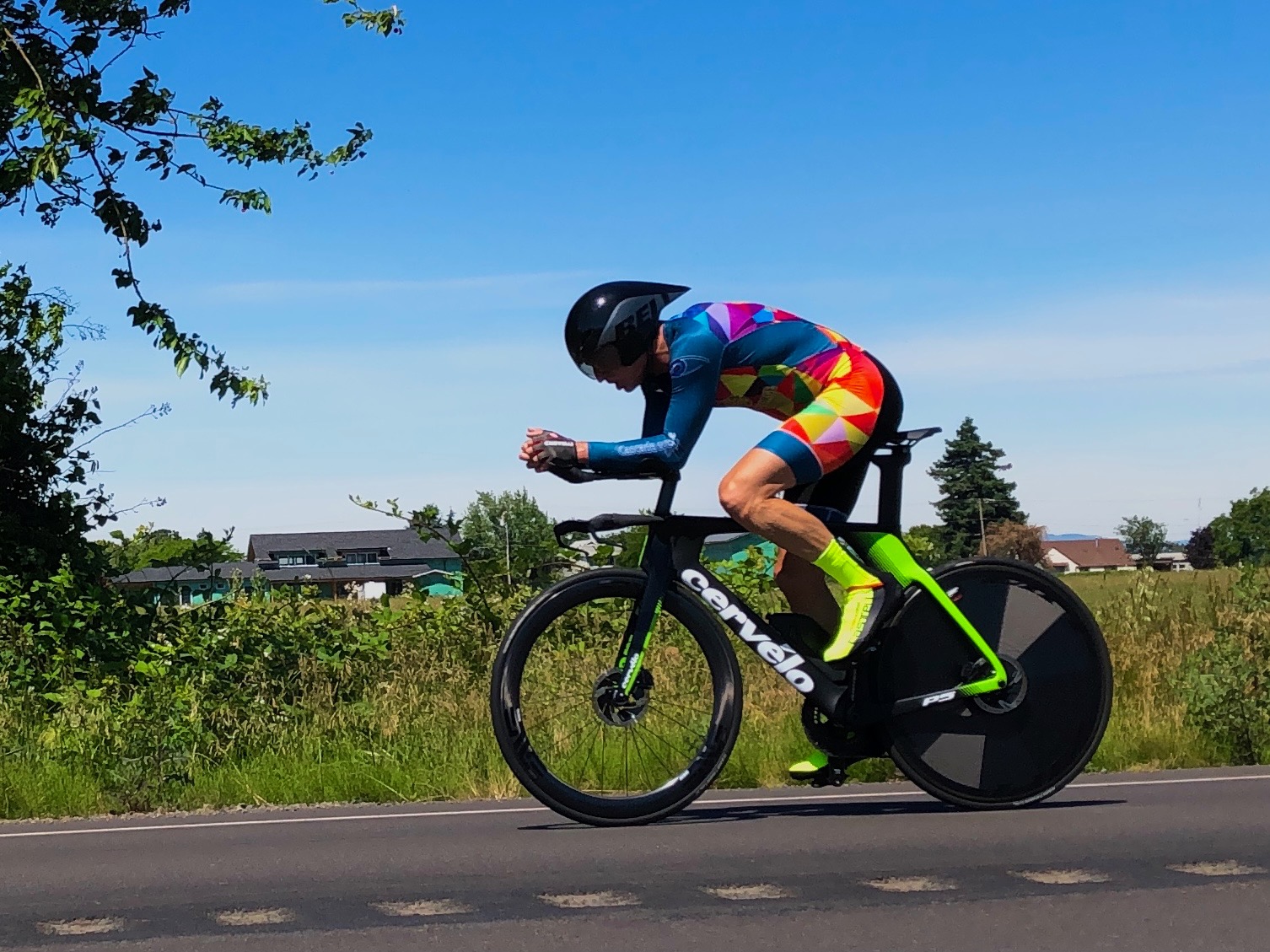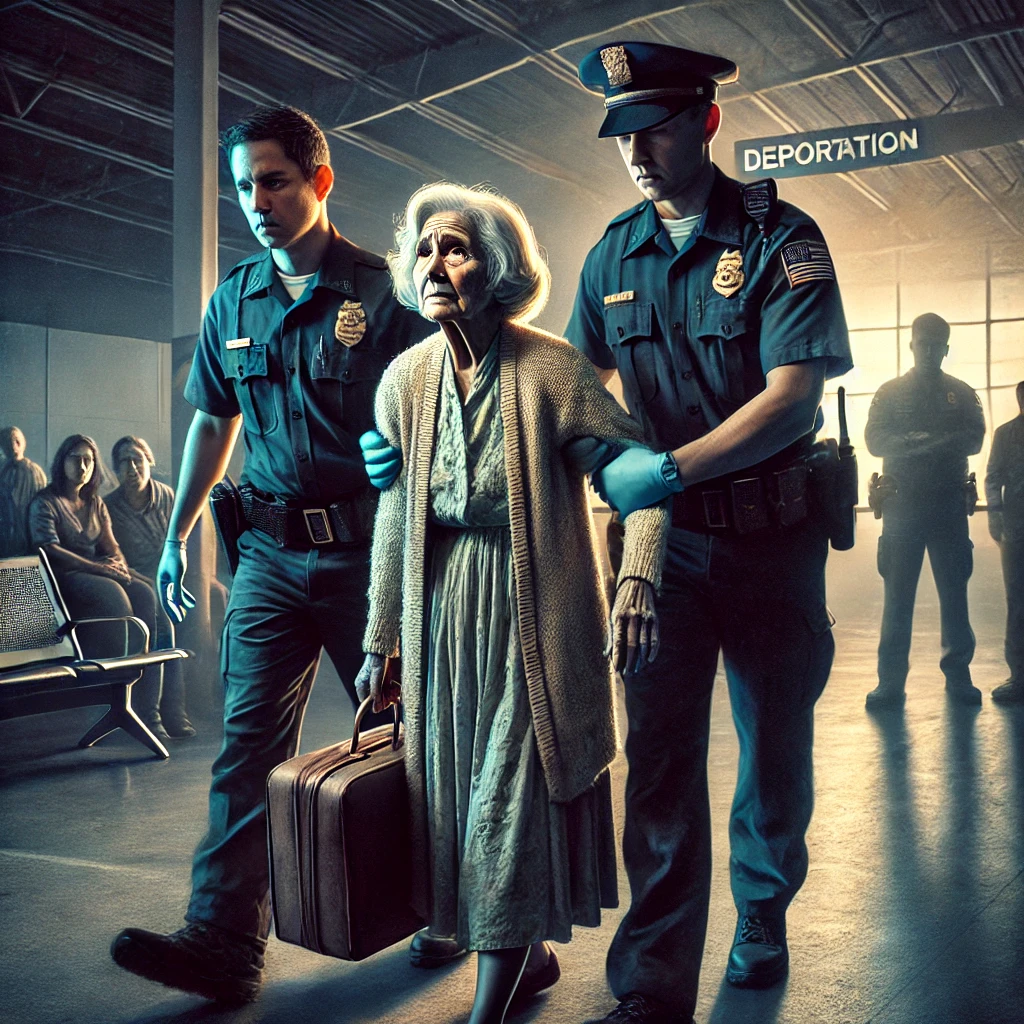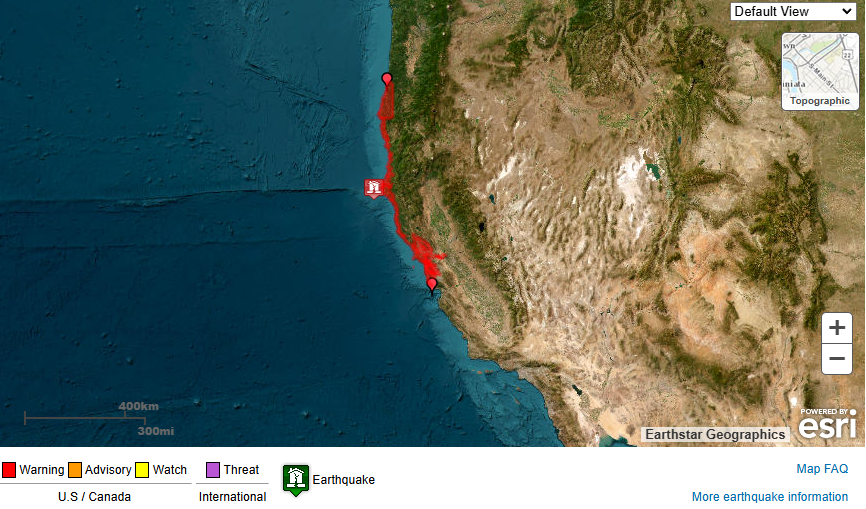Cyclists are racing to invisible finish lines all over the globe. Kom stands for “King of the Mountain” and is awarded to the rider who has the fastest time on any given course. The finish lines might be anywhere and there are no flaggers, no ambulances and no support staff to monitor these races. So the next time you see a cyclist go flying by, looking like they are in the last seconds of some extremely important race, chances are that might just be the case. The prize for wining these races is a virtual trophy or digital crown, if you will, that the rider will win if they record the fastest time of anyone who has uploaded their ride to the strava.com website. This might seem silly or even ridiculous to the casual observer but these riders take these trophies very seriously. These races are resulting in not only rider deaths but pedestrian deaths as well.
I want to be clear that I am an avid cyclist that enjoys the Strava segments leader board. We are all adults and should take responsibility for our own actions while out on the roads riding our bicycles. Yet the realist in me understands how I would feel if someone going for my kom died or killed someone else during the attempt.
Strava is an app athletes use to track their workouts and yes compete with each other on what they call segments. Segments are portions of real roads that cyclists ride and then record the starting and ending points to create virtual “time trial races” out in the real world. This is encouraging cyclists to compete in unsanctioned, unsupervised and unpermitted races on public roads.
At first introduction all segments of road could be turned into a virtual race for all cyclists using the app and recording their rides. There were then some legal issues that lead Strava to discontinue downhill segments, segments where the ending point was below the starting point. It is noteworthy that they did not disable the leader boards or “trophies” for these segments. They did disable the live real time feedback option that paid members could use that would let the rider know while on the segment if they were ahead or behind the time of the leader. This was an attempt to keep riders eyes on the road rather than looking down at their computer every 3 seconds to check their position. From personal experience this leads to riders simply going faster as they do not know if they are ahead or behind and can lead to tragedy, especially on dangerous steep downhill segments.
The first lawsuit was from the family of William Flint, who allegedly died while trying to regain a downhill segment kom in the hills of Berkeley. Strava counter sued the Flint family. It was thought that perhaps these segments could be dangerous and I assume Strava thought it wise to provide a safe product that did not encourage people to take risks. Strava did prevail in the case. The judge ruled that cycling is “an inherently risky activity” and that “Mr. Flint impliedly assumed the risks of bicycling.”
While I’m no lawyer the judges ruling seems inherently flawed. Imagine a company developed an app for auto enthusiasts to make segments and record leader boards with their vehicles on public roads. Now imagine competitive auto lovers going out on public roads and trying to set the fastest time on those segments. Would the company assume no liability for the carnage that would ensue? Driving a vehicle is also an inherently risky activity so would the same legal reasoning apply?
The one distinction that could be made between the two endeavors is that encouraging motor vehicles to race on public roads would pose a hazard to the public while cyclists doing so would pose a hazard primarily to the cyclist. But that is not always the case. Take the instance of 23-year-old property manager Cornelius de Bruin who was cycling on Wilmslow Road, south Manchester, on 20 June 2020 when he struck Ian Roland Gunn, 56, as the pedestrian was crossing the road. He was acquitted of riding “aggressively and recklessly“. I guess the prosecuting attorney didn’t have access to the defendants Strava account?
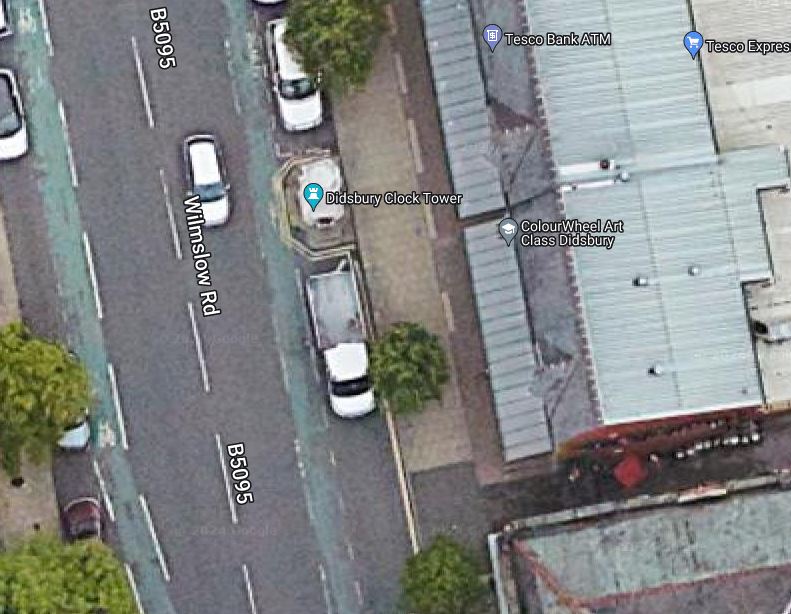
The above photo shows the location of the collision. The elderly man was walking across the street after shopping at the Tesco Express. The cyclist who in court said he was out for a leisure ride was traveling north on the left side of the road so he had ample time to see a pedestrian who was walking according to testimony given by eye witnesses as slowly. From right to left across that street slowly and struck by a cyclist. How in the world could that happen? Perhaps if a cyclist is attempting to place on a kom leader board? Is there a segment there?
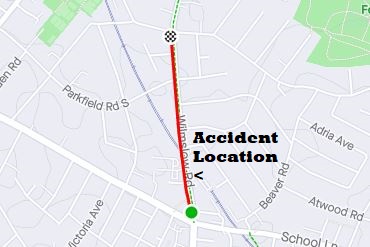
Above is the kom segment that starts at the corner and goes right through where the collision occurred.

Did the defendant have a history of going for koms in that area? In fact the defendant is ranked 31 out of 9527 attempts.
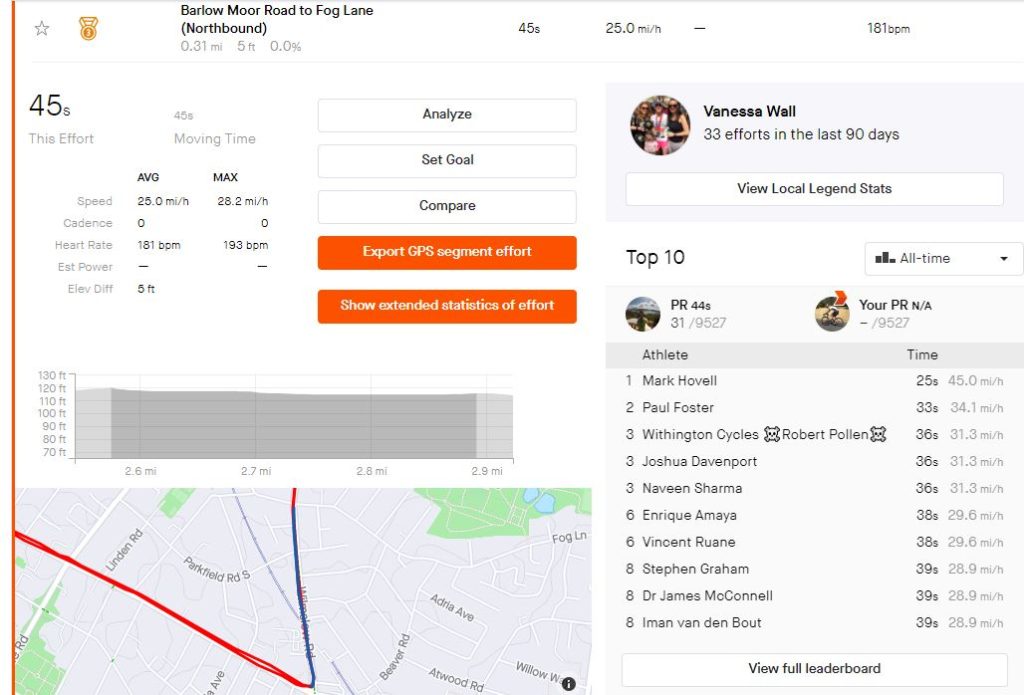
This kom attempt occurred 7 days after the collision and 1 day before Mr. Gunn died of his injuries. Please note the heart rate of 181-193bpm. This segment is flat so live feedback is enabled, perhaps the defendant was looking at his bicycle computer rather than the road? Pure speculation on my part but how else could a cyclist not see a slow moving pedestrian carrying groceries?
How common is this? Do cyclists on hiking trails run into hikers while they attempt to capture another kom? How many injuries occur because of these unsanctioned races that Strava is getting paid to at the very least kept track and publish the results of the winners?
This is also not a one off freak incident. While it is true that a cyclist killing a pedestrian used to be a rare event, the fact that I can even document three cases of cyclists apparently doing so while attempting or at least appearing to attempt to capture a Strava kom should be cause for concern. Yet another documented case is Sutchi Hui who was run over and killed by cyclist Chris Bucchere.
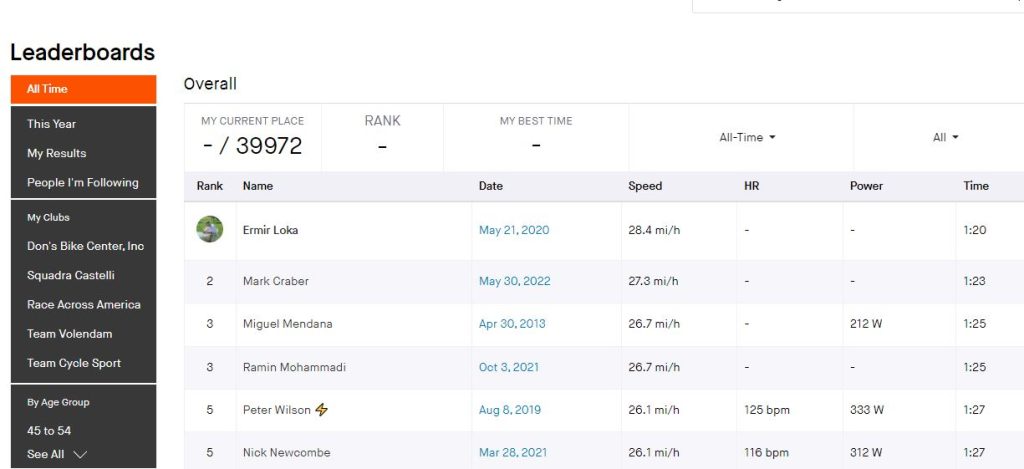
Peter McCombie, who had been on his way home from work as an administrator at the Royal London Hospital in Whitechapel, died from his injuries a week after the crash on Bow Road 3 July last year. He was aged 72. The cyclist, Ermir Loka, aged 23 fled the scene was later caught and sentenced to two years. What was not mentioned in any of the articles was why Emrir Loka was running red lights on his bicycle? You guessed it. You don’t get 1st out of 39972 people without taking some risks.
Cyclists are taking unnecessary risks while attempting to capture kom records and paying the ultimate price. I have been guilty myself of taking risks I shouldn’t have while riding and is in part why I started looking into cyclist tragedies that made little or no sense to me at face value. When I read a story about an accomplished cyclist that was killed while on a ride, I am always suspicious of how that happened. You don’t become an accomplished cyclist without spending a lot of time on the bike and learning how to stay alive while doing so.
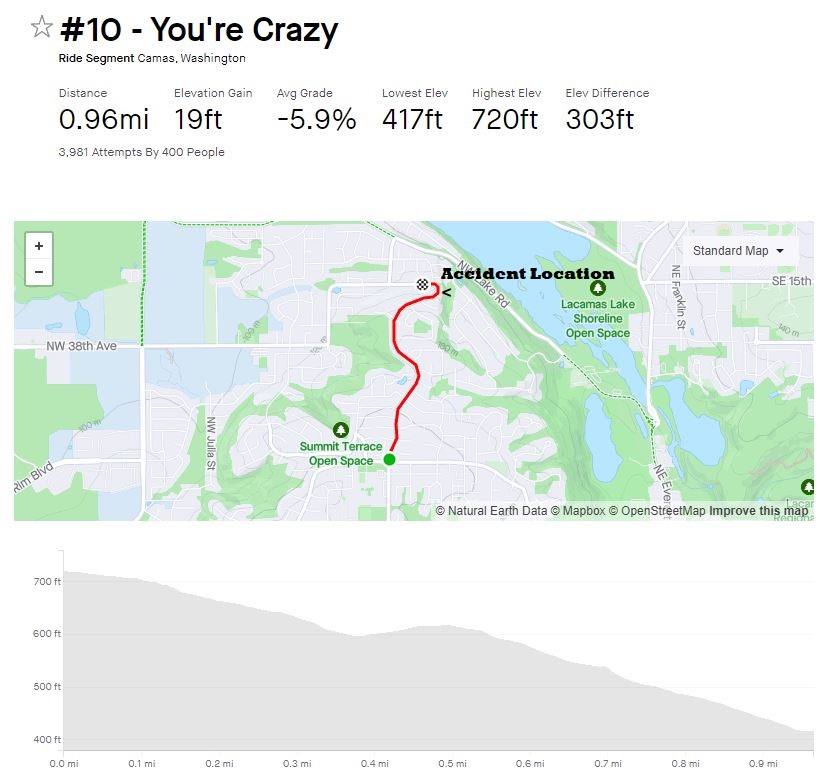
In 2019 I was training for the upcoming state championship races and was scouting out the potential competition. The previous years winner Michael Myers seemed like formidable competition but while researching his times I learned that he had tragically died. According to the report he ran into a house? How does an experienced and accomplished cyclist run into a house?
Is there a kom segment there? Yes a really dangerous one and the house he hit at 4200 Sierra is at the first corner after a long fast descent. Could he have had a speed wobble? Or a heart attack? Certainly possible but it’s also possible he is another victim of a kom gone wrong.
The last one I’ll point out is the death of renowned and accomplished Ethan Boyes. While it is true that an apparently intoxicated driver of a motor vehicle turned the wrong way up a one way street causing the collision, an experienced and elite bike handler like Ethan Boyes normally would be able to avoid an oncoming car under normal circumstances. Perhaps not if he was in the throws of an all out sprint and looking to his left to ensure he could merge onto Arguello Boulevard without impairing any oncoming vehicles.
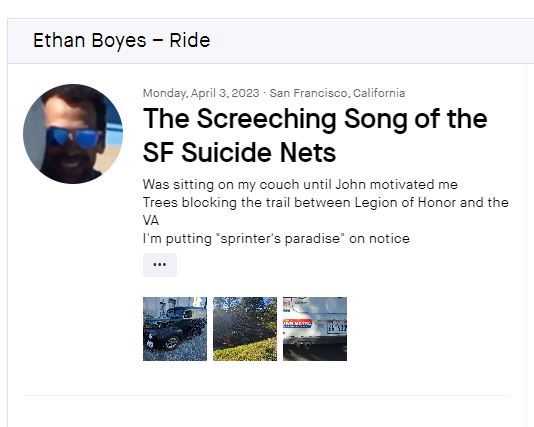
On April 3rd, Ethan put his fellow kom competitors on notice that he was coming for the “sprinters paradise” kom. On April 4th he would die on the segment.
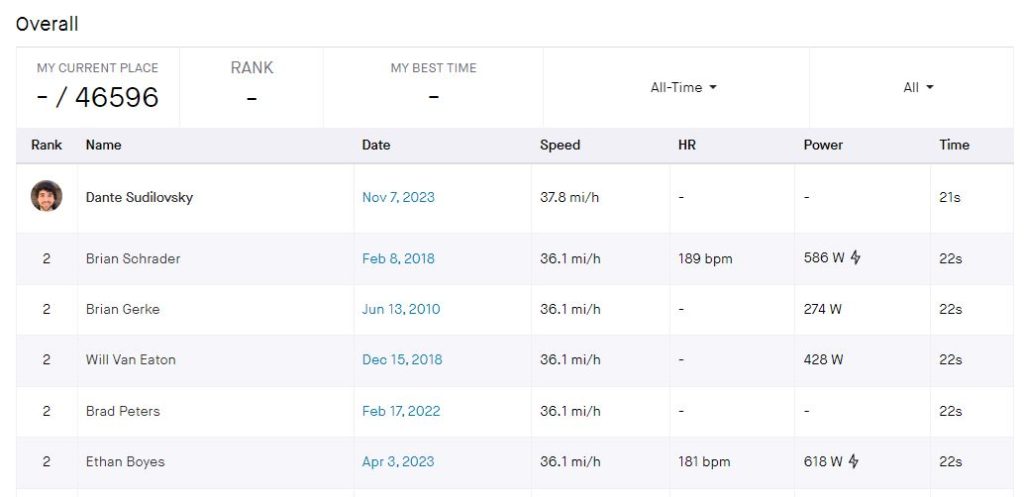
On April 3rd he uploaded his final ride tying the fastest time to date. What was he doing when the intoxicated individual turned up the wrong road?
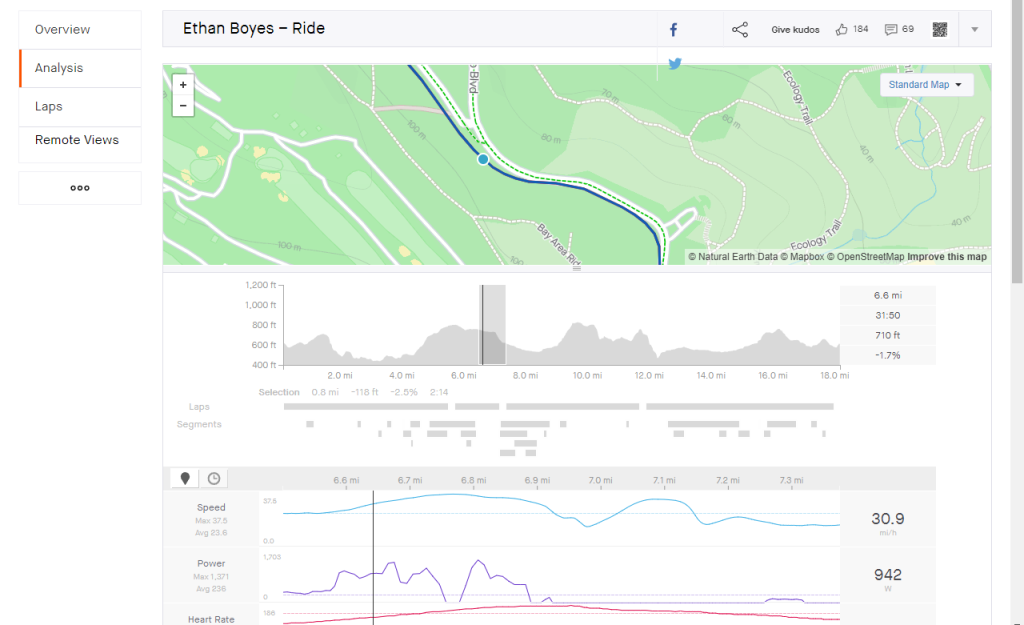
If he was doing what he did on April 3rd at the exact same spot he was doing 942 watts and traveling 31 mph about to merge onto the main road. If I was going for that kom I would be looking over my left shoulder to make sure I could merge safely at a high rate of speed. I wouldn’t be looking ahead of me where no car was supposed to be.

Strava Did flag that segment as Hazardous and will only show you the leader board if you consent to their hazardous agreement. So you can still view the award winners but you have to release Strava of any and all liability. I wonder if the elderly people getting run over during the races also sign a waiver?

It does make one wonder why Strava does not just do away with their leader boards for all segments. They clearly understand that these races can have consequences as they have a disclaimer. Does a company not have to adhere to basic standards of care? If their leader boards are encouraging and rewarding individuals who are racing on pubic roads without any type of safety measures in place, what exactly should they expect the outcome to be? In order to hold a bicycle race on a public street you have to obtain permits, you have to meet some basic safety requirements because while cycling is an inherently risky endeavor, racing them is exponentially more dangerous. Encouraging racing on public roads without the safety precautions in place is dangerous to everyone. There is a reason every jurisdiction in the United States requires permits for holding bicycle races.
This may require a court to decide what constitutes a bicycle race? Does posting the course or at the very least hosting the course information and providing trophies constitute holding a bicycle race? Does the fact that users create the course and the platform only awards the trophies absolve them from all liability?

